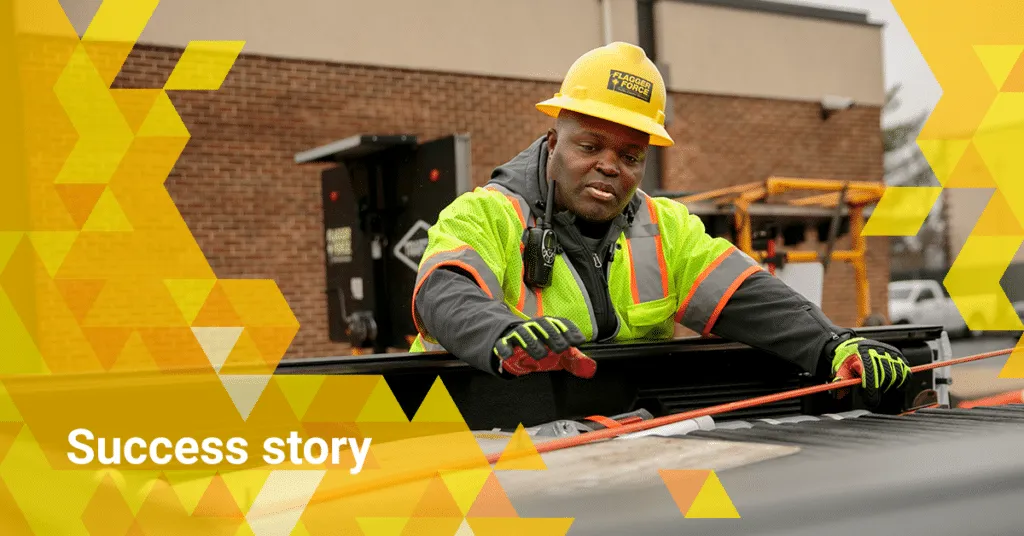The Digital Workplace: Employee Engagement Strategies That Make a Difference

If you look up “employee engagement” you’re going to get a lot of definitions. The efforts are, well…mixed.
Some are pretty scientific-sounding— “a fundamental concept in the effort to understand and describe, both qualitatively and quantitatively, the nature of the relationship between an organization and its employees.” Some are buzzier—“a workplace approach resulting in the right conditions for all members of an organization to give of their best each day.”
Some, like this one—“the extent to which employees feel passionate about their jobs, are committed to the organization, and put discretionary effort into their work”—are just weird. What is discretionary effort, anyway?
We think employee engagement is a little more simple than that. And it’s not just about what frontline employees give. It’s about what they get. Employee engagement happens when employees feel supported, understood, and confident enough to do their best work.
That can be tricky with frontline workers, but these digital workplace employee engagement strategies can help businesses make it happen.
Employee Engagement Strategies for the Digital Workplace
Employee engagement in the digital workplace has to be more than a slogan. Hanging up a poster isn’t going to cut it.

True engagement starts the moment an employee is hired and continues every day.
Here are the best digital workplace employee engagement strategies to make that happen, with examples of real companies that made it work:

Automated Onboarding
It’s impossible to overstate the importance of onboarding. The way an employee starts can set the tone for their whole tenure.
Onboarding includes:
- HR paperwork
- Learning about processes, policies, and what’s in the handbook
- Formal training
- Informal training (learning from more senior employees)
It’s a lot. That’s why smart companies are automating more HR and training processes. When onboarding happens via a digital workplace platform, onboarding paperwork can be completed on an employee’s phone and managers and HR can verify completion instantly.
Automation makes onboarding easier for everyone. It saves more time for actual training. And that gives the employee more confidence to start their new role.

Multichannel Training
The best part about the training is reading lengthy documentation about a new process.
That’s never been true and is even less so now. People are used to video, and using video has proven to be more engaging in training. Short videos with interactive quizzes are great ways to get employees to retain lessons both onboarding and ongoing training.
Learning shouldn’t be a chore. It should be interesting, understandable, and not be a burden. Creating more engaging options for multichannel training makes it memorable. And that makes employees more likely to feel comfortable with all their new duties.
| Case Study: The Fitler Club, an innovative exercise and lifestyle space in Philly, adopted a user-friendly, mobile-first engagement platform when forced to go remote during the pandemic. Even though the heart of the company was reduced, they kept new employees well-trained and well-versed in the Fitler culture. It showed the power of what memorable training can do. See the full Fitler case study |

More Recognition
It should come as no surprise that employees at every level like to be told they are doing a good job. But recognition is more than an “attaboy” every once in a while. It needs to be part of the company-wide culture.
A recognition program, which could come with or without rewards, needs to come from the top down. Frontline employees should be recognized by management regularly, and publicly—making sure everyone sees recognition encourages others to do their best work. A digital workplace platform makes it easy to get the good word out to everyone.

Multilateral Communication
Most frontline teams have pretty limited communication. Frontline employees can talk to their managers, of course. They can talk to their teammates, but usually only if they are on the same shift. Without a company email account or access to some kind of portal or intranet, that’s about it.
A digital workplace with features that allow employees to talk to each other, even if they are on different shifts or even at different locations, changes that. It gives them a place to seek advice, swap ideas, troubleshoot, and make their voices heard. Online collaboration is how jobs get done.
But communication can go in a lot of other directions, too. Management can send out surveys and find out what employees really need. They can send and receive messages directly. This does more than boost morale. When management knows what is going on with ground-level employees, they can make real changes. That helps employees do their best work.

Inline Translation
How many languages do your workers speak? Even if your frontline employees are all based in the United States, there are probably a lot of different languages spoken, and it’s obviously true if you have a global workforce.
This could make true communication a challenge. Even people who speak some English might not understand everything in training, documentation, or messages. This is frustrating and alienating, and it makes it hard for them to do their job. They aren’t connected, and they aren’t engaged.
A digital workplace platform with automatic inline translation makes everything much easier. It saves time, streamlines internal communication, and puts everyone on the same level of preparation and engagement.
| Translation Case Study: Cargill, the food giant, has over 155,000 employees in 70 countries. There are 30 languages spoken in their facilities, and they are dedicated to an inclusive workplace — where employees can do their best work. They rely on an inline translation system on their digital workplace platform to get the same information to everyone around the world. That makes for a unified workplace — and better employee engagement. See the full Cargill case study |

Mobile Tools
The frontline workforce is a mobile workforce. Employee engagement on the frontline can’t be done in a central kitchen—that doesn’t exist. It can’t be done by email—most frontline employees don’t have one. That’s why engagement demands a mobile platform.
A platform that all employees can access from their mobile devices ensures everything they need is just a tap away. It also means companies don’t have to buy new hardware. They just have to have the mobile software.
The Best Platform for Digital Workplace Employee Engagement
Employee engagement isn’t a buzzword. It’s a vital part of company success. It’s not about putting something on a poster, but it’s about giving your employees the tools to do their best work.
Beekeeper is a digital workplace platform designed for the frontline. Our innovative mobile-friendly software:
- Brings all your apps together in one place
- Serves as an easy way to access important information in video, documentation, slideshows, or anything
- Enables multi-channel communication, including surveys
- Translates automatically in over 100 languages
Recognized by Team Building as a top employee management software solution.
No matter how you define employee engagement, you know it needs to be a company-wide effort. With Beekeeper’s digital workplace, employee engagement strategies become a natural part of your everyday culture.
Download our Digital Enablement white paper or talk to one of our experts to see how Beekeeper can help you maximize ROI and transform your business.

About the author
Beekeeper
We make frontline lives easier, work safer, and teams more connected so businesses can reach new heights. At Beekeeper, we’re dedicated to making frontline lives easier by connecting workers with the tools, support, and information they need to feel valued, do their best work, and drive the business forward.







